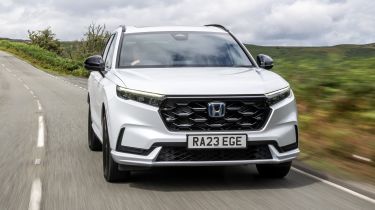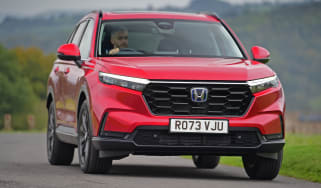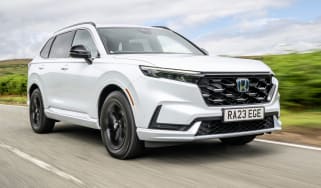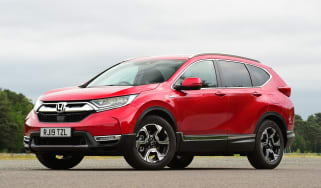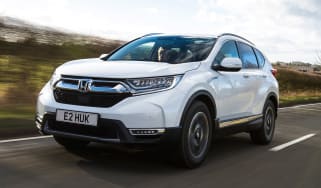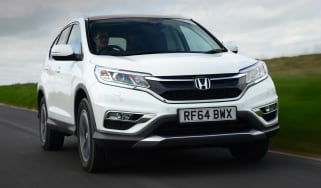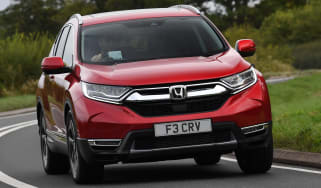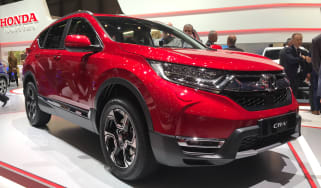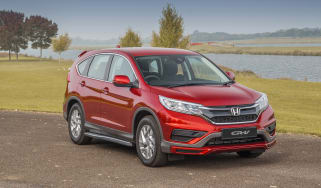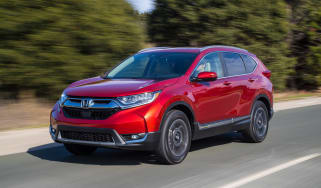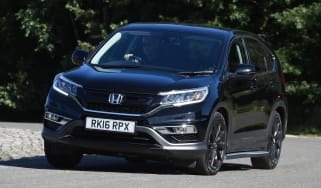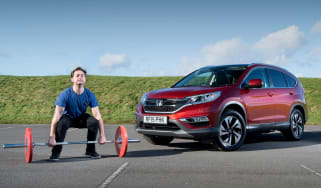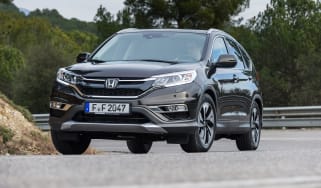Honda CR-V review: practical but pricey hybrid SUV
Roomy, well-equipped and stuffed with safety technology, the Honda CR-V is a fine choice for families, albeit a pricey one

Quick verdict
Does the Honda CR-V still stand for ‘Compact Recreational Vehicle? Well, at over 4.7 meters in length for this sixth-generation version, we wouldn’t say so. Perhaps ‘Comfortable Recreational Vehicle’? Again, we’d be inclined to say you can find several rivals that are more comfortable. However, the CR-V is a spacious, well-equipped SUV that’s also packed with safety technology to keep you and your loved ones safe. Mind you, it should come stacked with equipment, considering its premium pricing.
About the Honda CR-V
The CR-V has been a part of the Honda lineup since the late ‘90s when it was the brand’s only SUV, and it competed with rivals like the Land Rover Freelander and Toyota RAV4. Today, the CR-V sits above the smaller Honda HR-V and ZR-V as the largest SUV from the Japanese manufacturer.
It still goes up against the RAV4 (and its Suzuki Across counterpart), but now it’s the Land Rover Discovery Sport, plus a whole host of other challengers, including the Ford Kuga, Hyundai Santa Fe, Kia Sorento, Mazda CX-60, Nissan X-Trail. Peugeot 5008, Renault Austral, and Skoda Kodiaq. You can even include posh rivals such as the Audi Q5, BMW X3, Lexus NX and the Volvo XC60 in the mix due to the CR-Vs ambitiously high price, which is even greater than some electric alternatives such as the best-selling Tesla Model Y.
That pricing starts at around £46,000 for the entry-level Elegance, rising to nearly £49,000 for the Advance trim, going all the way up to almost £54,000 for the range-topping Advance Tech. We think that’s pretty punchy, considering that puts it in the realm of some excellent premium SUV choices, a few of which have the additional flexibility of seven seats. That’s impossible with the hybrid-only UK CR-V range because the batteries and the associated hybrid gubbins take up the space where the third row would go. Seven seats are available in petrol-only versions of CR-V sold in other countries, but we won’t get that option in the UK because the petrol will be too thirsty for our tastes.
Used - available now
We’re getting the full-hybrid e:HEV CR-V, which uses a 2.0-litre petrol engine, an electric motor, plus a dinky 1.06kWh battery pack, plus a plug-in hybrid e:PHEV to woo potential company car customers. The latter may also tempt people wishing to tow a caravan with its 1500kg towing figure, although it is a shame that this particular version is front-wheel drive only, potentially posing a problem for anyone trying to pull a caravan across wet grass. The regular e:HEV CR-V has the additional traction benefit of four-wheel drive but has a disappointingly low towing limit.
The CR-V is very well-equipped with a panoramic glass roof, electrically adjustable and heated front seats, a heated steering wheel, plus leather trim. There’s also an electric boot lid, a rear-view camera, automatic LED headlights, four different drive modes, a wireless smartphone charger, keyless entry and Honda’s Sensing 360 safety technology.
Step up to the Advance model, and you’ll get an uprated sound system, electric adjustment for the driver’s seat with memory settings, a head-up display, heated rear seats and ventilation for the front seats, plus adaptive headlights. The priciest Advance Tech is the only way to get the plug-in hybrid version, and adds side parking sensors, black alloy wheels, black exterior trim, and a dark headliner inside.
Frequently Asked Questions
If having lots of safety equipment, practicality, and an easy-to-use interior are important to you, then the Honda CR-V is a good car to consider. However, we think there are better rivals out there if you want comfort, performance, and a decent drive.
